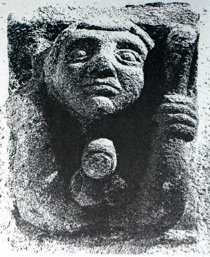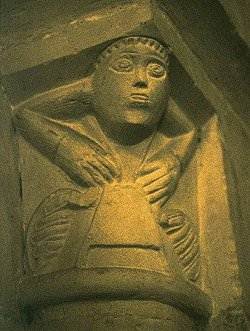
If wealth was always represented by a moneybag,
often weighing the carrier down, sins of the flesh were variously
represented by grotesque
figures, usually naked and displaying or indicating their long
hair or beards, symbolic of rampant sexuality.
Many of these are exhibitionists, both male (displaying and
sometimes licking oversized apparatus of masculinity) and female
(often showing huge vulvas). Some exhibitionists have since
had their important messages hacked
by uncomprehending prudes.
Others
remain as they were first carved, as this semi-robed and richly
head-dressed vulva-pulling female inside one of the six Romanesque
churches in Poitiers,
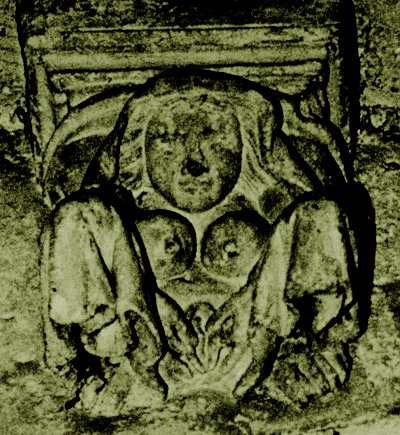
Church of Sainte-Radegonde,
Poitiers (Vienne)
and this Spanish portrait-pair
worthy almost of Goya.
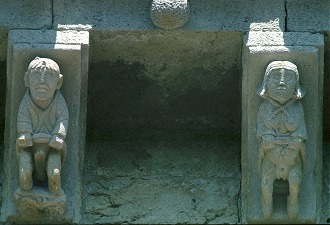
click
to see the earliest known pair of exhibitionists
San Pedro de Tejada (Burgos)
Damnation was vividly represented, most frequently by monsters
grabbing or swallowing human figures (often naked, and/or acrobatic,
and/or exhibitionist) - representing Satan's Realm claiming
and swallowing up the souls of sinners.
(For
more on monsters click here.)
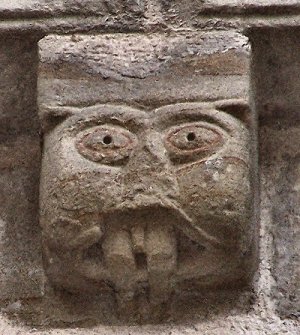
click
to enlarge
Figeac (Lot) interior corbel of abbey church.
click for 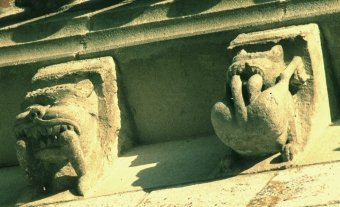 more
more
Maillezais (Vendée),
France
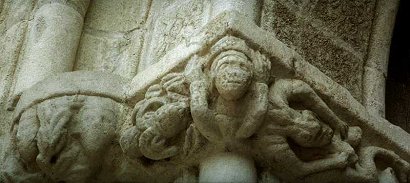
click
for larger pictures
(Toothy and/or horned devils also occur in 12th century Persian
illustrations of Hell,
where sinners are also attacked by snakes and scorpions.)
In
this manuscript illustration hairy devils practise sexual sadism
on a concupiscent sinner.
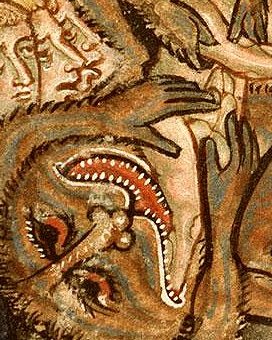 click
to view the entire scene
click
to view the entire scene
A toothy devil squeezing the genitals of
a concupiscent sinner,
from the Manerius Bible (c.1185-1195), Paris, Bibliothèque
Sainte-Geneviève, 0010, detail of folio 128v.
The
head-to-ears acrobatic position(the
form of the figure 6 which is the number associated with sin
in the book of Revelations) is also echoed by another
symbol of luxurious carnality - the mermaid, later depicted
gazing into a mirror to illustrate 'unnatural' vanity in the
modern sense. It
is a very ancient motif, and the mermaid holding her double
tail occurs, with other variations, in Coptic art (e.g. Ahnas
in Egypt). This Catalan mermaid is suckling snakes forever in
Hell - a little like
Prometheus on his rock.
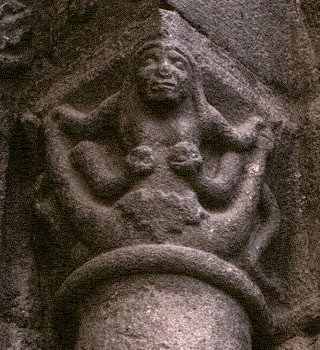
Seu d'Urgell (Lleida), Spain
The sin of Luxuria
(the depravity of the rich) was typically punished by Hellish
snakes, tortoises,
or toads
attacking the breasts of long-tressed naked and thus lascivious
and licentious women - while Concupiscentia
(lust, lechery and lubriciousness) in men was punished by
serpents biting their balls or beards or moustaches, or otherwise
threatening them.
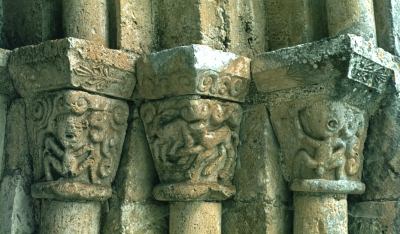
Saint-Front-sur-Nizonne (Dordogne),
France
click
for a larger picture
Huge,
bicorporeal, demonic beasts commonly symbolised the fate of
sinners, though the combination of this motif with an ithyphallic
male is extremely rare, if not unique.
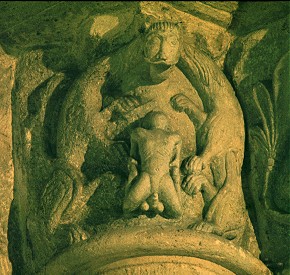
Puypéroux (Charente),
France
click
for a larger picture
One of the remarkable
capitals at Beverley Minster in Yorkshire shows a non-ithyphallic
exhibitionist being restrained by two angels or cherubim.
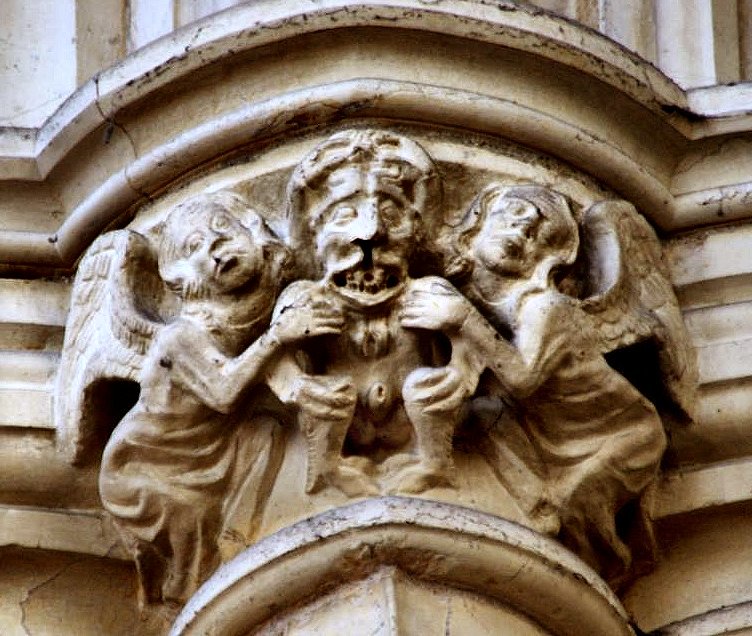
click
for a larger picture
Sometimes
the accompanying beast(s) are more ambiguous - as in the case
of the centaur beside a male groping a female at Burford
in Oxfordshire, and two centaurs in an enigmatic but probably
sexual scene at Berrioplano
(Navarra). The centaur could sometimes represent Christ, but
more often the beastly man, as at Burford. At Stavanger
(Norway) he is being tormented by an ornithomorph.
The blowing of horns
into the ears of the unambiguously-megaphallic damned suggests
both the Last Trump of Judgement and the presence of evil.
click
for more 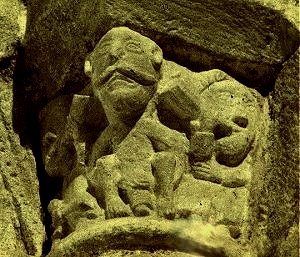 hornblowers
hornblowers
Passirac (Charente), France
At Saint-Morillon
(Gironde) a male with a huge scrotum blows his own trumpet.
It
is by now obvious that musical instruments can be either godly
(the trump of doom) or ungodly (the music of necessarily-secular
entertainers). The perception of the licentiousness of actors
or mummers may owe something to the classical tradition - for
example this terracotta statuette of an actor wearing phallic
headgear...
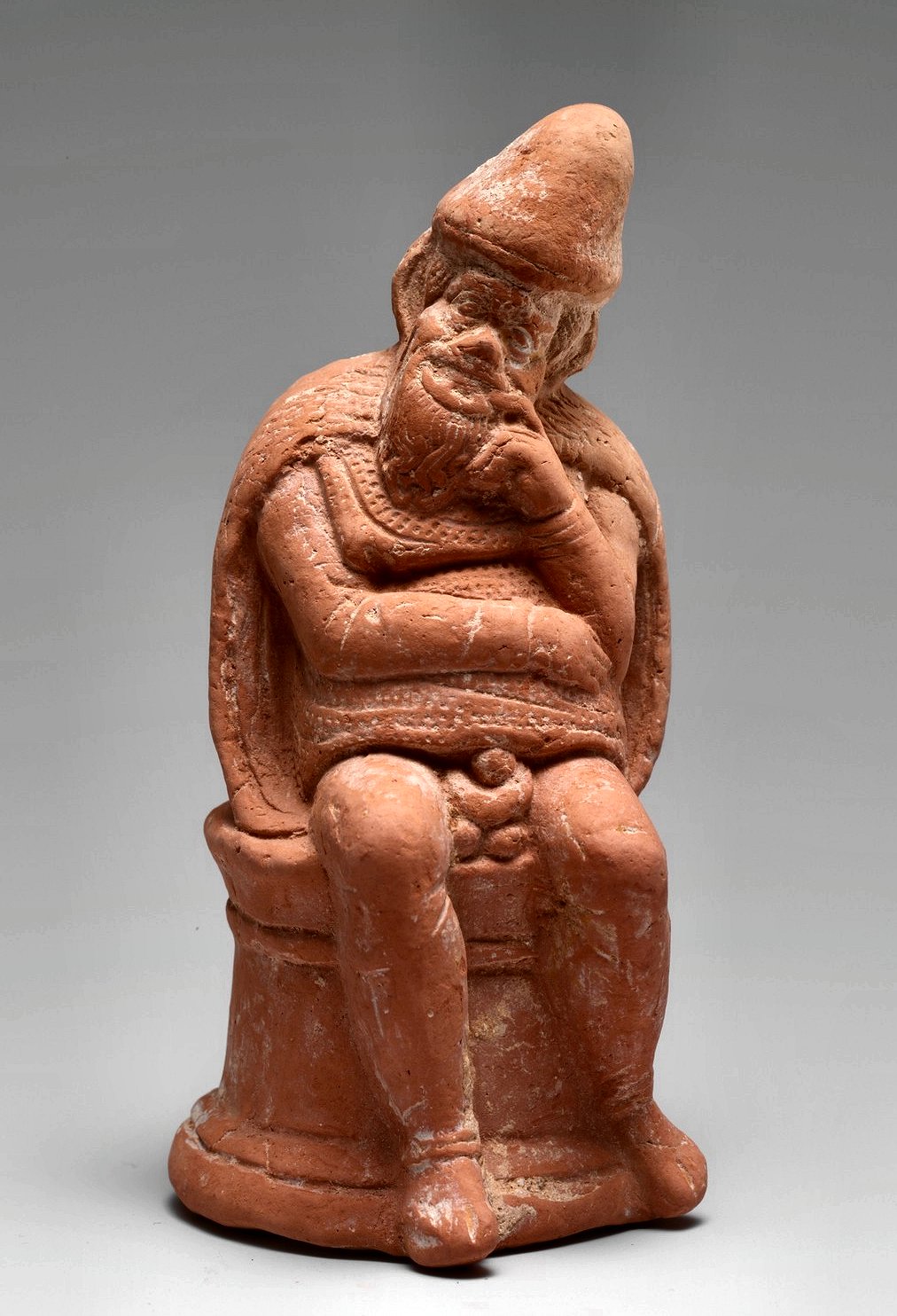
...while
that of musicians might well have been encouraged by ancient
Mesopotamian portable objects such as this Elamite musician
from ancient Iran,
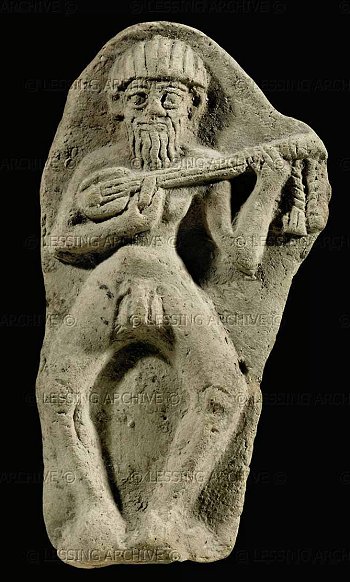
click
to enlarge
and this group
of musicans from Susa in the same area, none of whom is blowing
a horn,
which was never considered an instrument of entertainment.
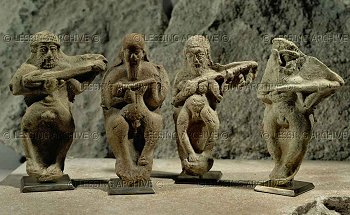
click
to enlarge
It
is the (competing) entertainment element which was the problem
for the Church.
Right up to our own times, musicians have been beyond the Pale,
along with beggars (think of Schubert's Hurdy-Gurdy-Man)
whores and actresses (who were often considered to be whores).
Devout Christians in the USA dubbed the Blues "Devil's
Music", and at least one famous bluesman turned his back
on his 'sinful' singing and finger-picking in order to play
only Christian songs. The phrase sex, drugs & rock'n'roll
is not unknown.
Puritan Muslims (e.g. the Taliban today) outlaw music altogether.
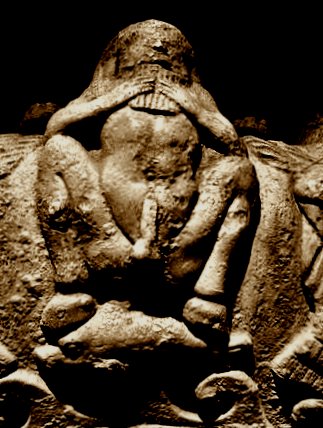
This hoofed satyr playing
the pan-pipes is on an Etruscan lampadario
and could easily be a model for a Romanesque corbel...
as could
this Greek bronze now in boston museum.
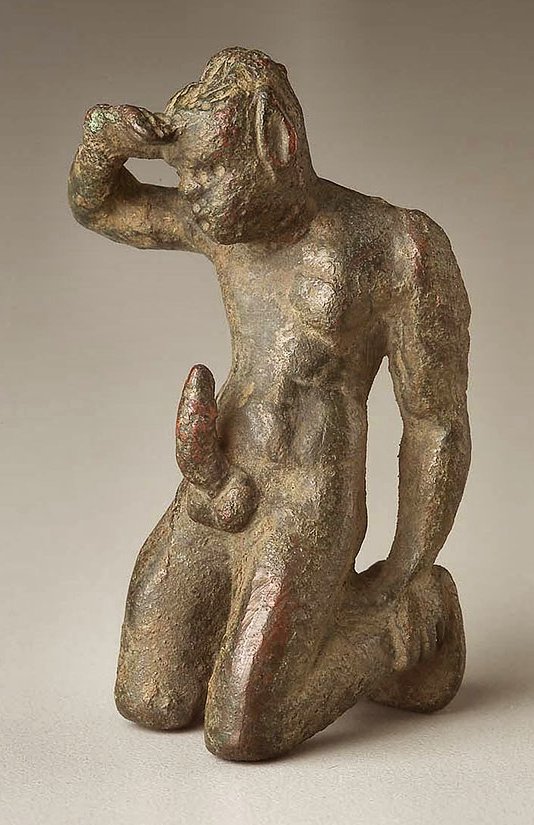
A visit to convincing
re-creations of mediæval entertainments by the group Daughters
of Elvin on YouTube
will suggest to some degree the alarm (if not horror) clerics
and monks would have felt.
The
non-entertaining horn or oliphaunt theme is marvellously elaborated
on the more important churches. At Brioude,
the instruments are blown while two ?monks pull each other's
beard, while at Agen it is the sinner which blows the horns,
while ensnared by the reptilian tails of frightening birds which
scream into his ears.
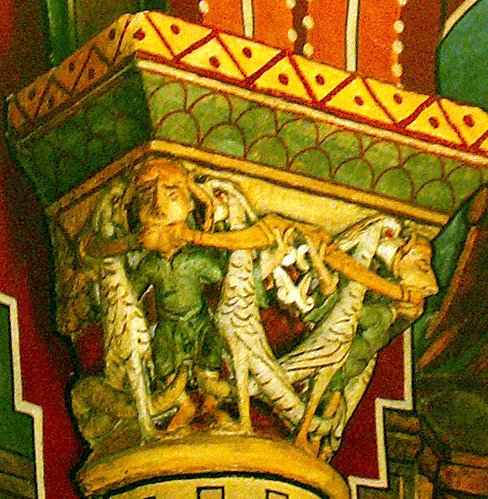
Agen Cathedral (Lot-et-Garonne),
France
Men
flanked by beasts have, of course, other meanings, depending
upon what the beasts are doing to the man (warning or punishing
or swallowing), and what the man is doing to the beasts. A popular
theme from the dawn of recorded history is the Master
of Beasts, who, in a Christian context, can be Adam, Daniel,
Samson or Christ. Adam (iconographically derived from Orpheus)
might be portrayed naked, as indeed might Samson. This nakedness
has nothing to do with exhibitionism or carnal sin, but, rather,
emphasises Man's 'naked superiority' over other
animals.
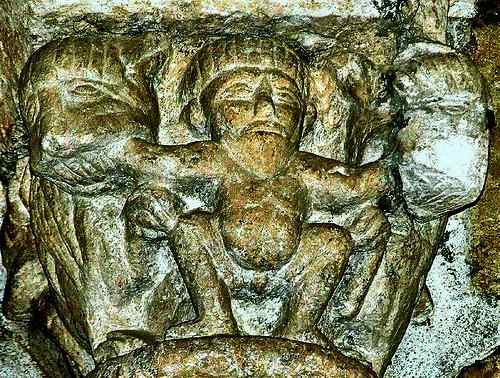
Saint-Aulaye (Dordogne), photographed
by Tina Negus.
A naked Samson thrusts his hands down
the throats of a pair of lions.
Click
for more
photos
by Tina Negus on the theme of Master of Beasts.
For hundreds of years neither sex
nor marriage were endorsed by the Western Church. St Augustine
had said that the only sex that was not a passage to Hell was
the carnal union of two Saved Souls for the sole purpose of
creating another soul to be saved. Thus most marriages were
considered to be at least potentially sinful (unlike sacred
marriages between holy men), and it was not until the the Fourth
Lateran Council of 1215 that the Church declared marriage to
be a sacrament - with a prescribed ritual - and ensured its
eventual demise by espousing the 'family values' so despised
by Jesus and the first Christians. It is no coincidence that
this came very shortly after the new cult of the Virgin Mary
replaced the respect accorded to Mary Magdalene and Lazarus
the Leper in the previous hundred years. The arrogant new Gothic
churches were dedicated to Notre-Dame and not to La
Madeleine or Saint-Lazare.
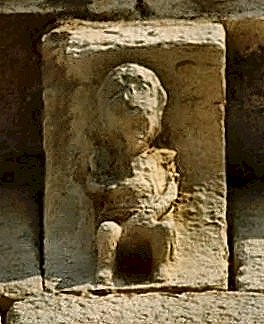
El Pla de Santa
Maria (Tarragona), Spain
Female exhibitionists have been illustrated in various books,
notably in Images
of Lust , but
few people are aware that there are at least as many male
exhibitionist carvings on churches across the length and breadth
of Europe - from Bohemia to Galicia, and Denmark to Sicily -
an enticing selection of which is illustrated here.
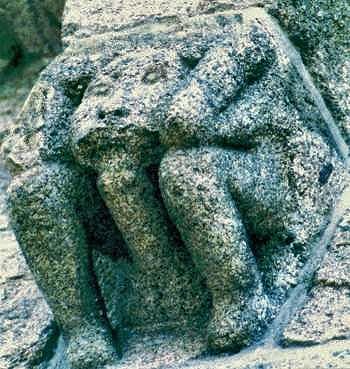
Solignac (Haute-Vienne), France
click
to see a later misericord inside the church
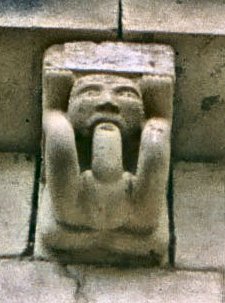


Saint-Ouen (Charente-Maritime),
France
click
for more
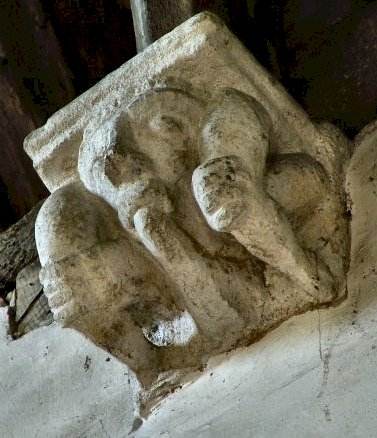
Avening (Gloucestershire),
England
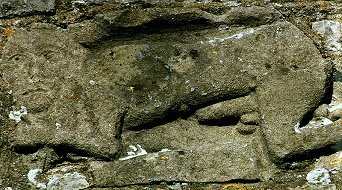
Abson (Somerset), England
click
for a larger picture
Some
have, unsurprisingly, been hacked by puritans or revolutionaries,
like this Spanish one at Ujué (Navarra).
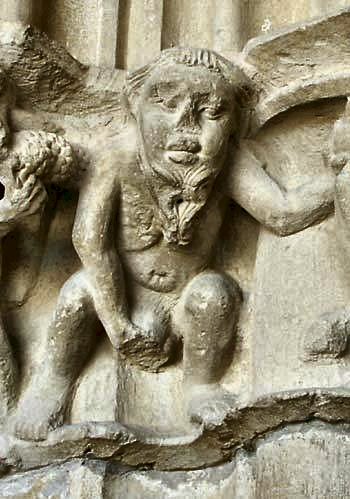
They appear also on castles and even stranger places in Britain
and Ireland.
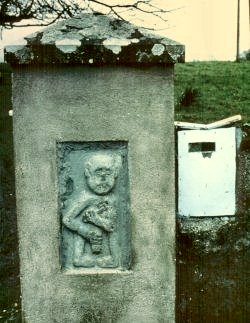
Post-mediæval gate-pillar,
Ballycloghduff (Westmeath), Ireland
click
for a larger picture
_________________________________________
This web-page is dedicated
to the late Martha Weir,
who was amazed but unfazed by these carvings,
and without whom "Images
of Lust"
would never have been researched or written.

LIST
of PHOTOGRAPHS of MALE and FEMALE EXHIBITIONISTS
with distributtion-map
on this site
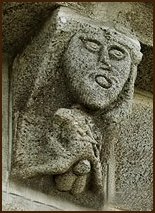

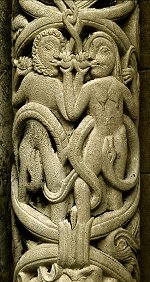




 more
more





















